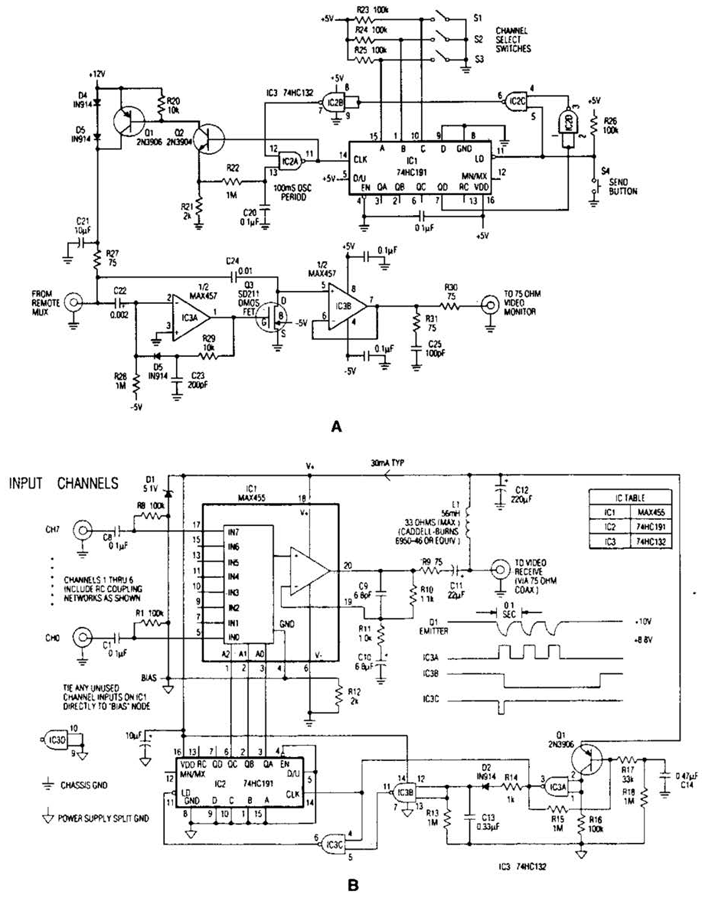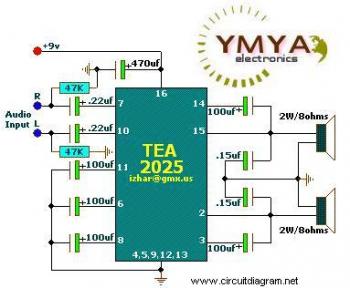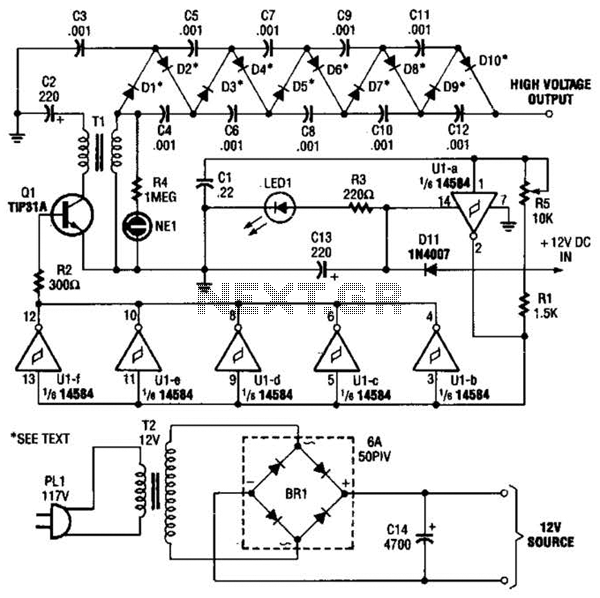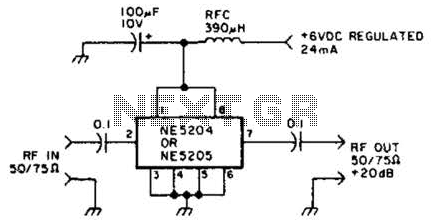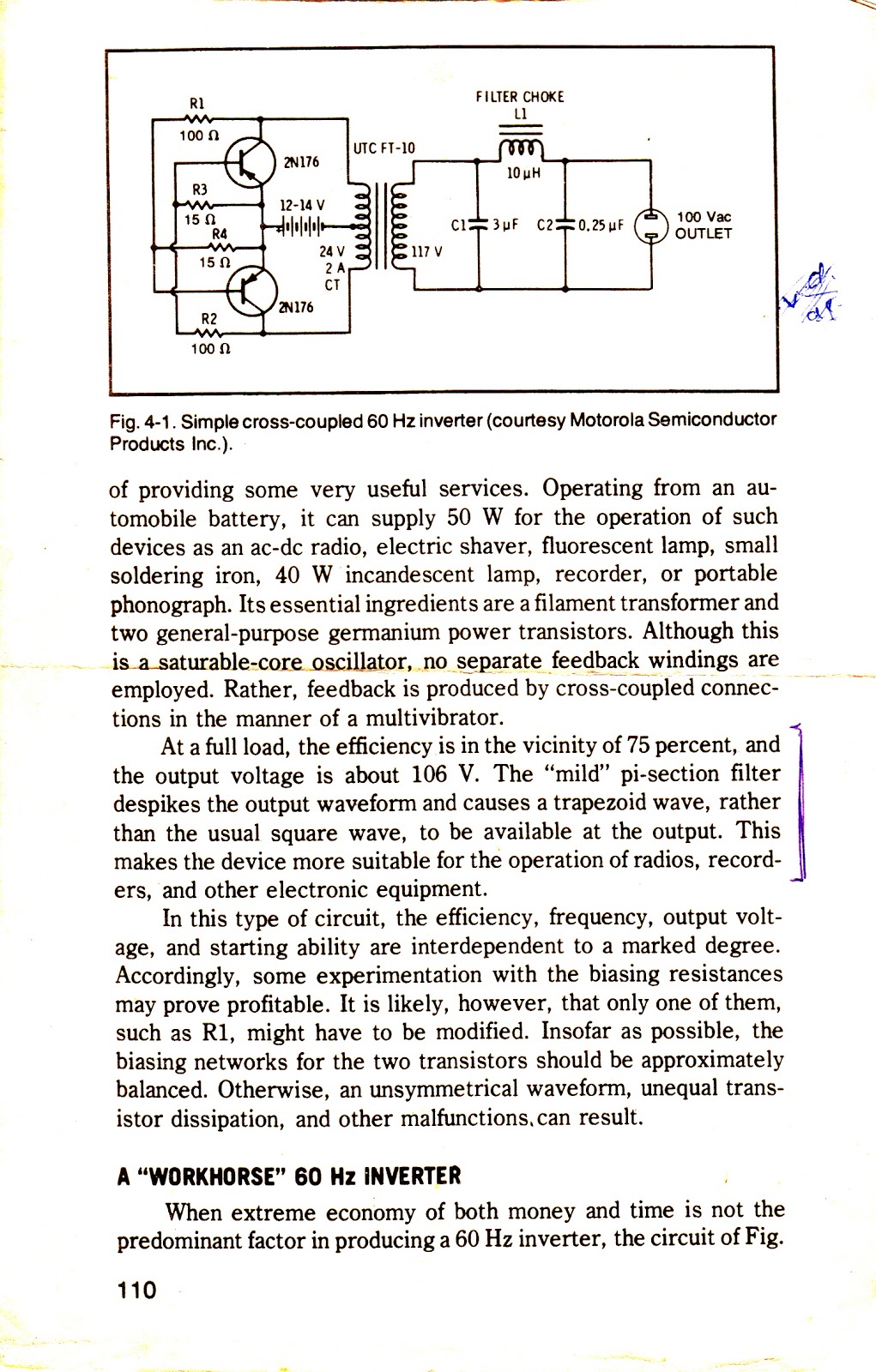
Water tank overflow liquid level sensor alarm circuit
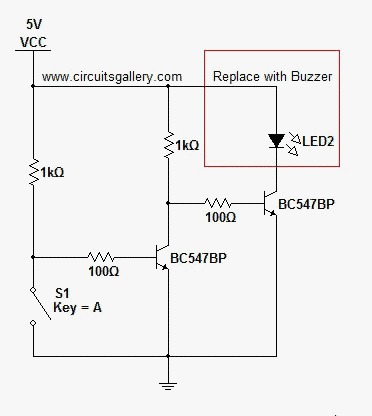
The water tank overflow liquid level sensor alarm circuit is a straightforward electronics project suitable for school students. Previous discussions have covered numeric water level indicators and water level controller circuits, which are more complex and intended for engineering students. The schematic for the water tank overflow alarm is illustrated below. It emits a beep sound when the water tank is full, preventing accidental overflow and conserving water. The circuit consists of a water level sensor and BC547 transistors, making it accessible for electronics hobbyists to build at home or in workplaces at a low cost (approximately $0.50). The key component of this circuit is the transistor switching mechanism, which helps avoid water wastage when the motor pump is inadvertently left on. Initially, the voltage at point A in the circuit is Vcc, keeping transistor Q1 in the ON state (acting as a digital switch) with its collector voltage at Vce sat (0.02V). A ground connection is submerged in the water reservoir. As the water level rises, the ground contacts the base terminal of transistor Q1, switching it to the OFF state and causing the collector voltage to rise to Vcc. This high voltage at the collector of Q1 activates transistor Q2, allowing current to flow through the buzzer circuit, which produces a beeping alarm sound. (Here, the transistor functions as a load switch.)
The water tank overflow alarm circuit operates effectively by utilizing the properties of transistors as switches. The BC547 transistors are NPN type, which means they require a positive voltage at the base to conduct. In this circuit, the water level sensor acts as a conductive path to ground when submerged, allowing the base of transistor Q1 to receive a low voltage signal. When the water level rises sufficiently, Q1 switches off, which in turn allows the collector voltage to rise, activating Q2. This arrangement creates a cascading effect, where the change in state of Q1 directly influences Q2, leading to the activation of the buzzer.
To construct this circuit, a basic understanding of electronic components is beneficial. The water level sensor can be made from conductive materials, such as copper rods or wires, arranged at specific levels within the tank to detect the water level accurately. The buzzer used in this circuit can be a simple piezoelectric buzzer, which is cost-effective and readily available.
The circuit's simplicity and low cost make it an ideal project for educational purposes, allowing students to learn about basic electronic components and their functions in a practical application. Additionally, this project can be expanded upon by integrating features such as remote notifications or automatic pump control, enhancing its functionality and educational value. Overall, this water tank overflow alarm circuit serves as an excellent introduction to electronic circuit design and implementation.Water tank overflow liquid level sensor alarm circuit is a simple electronics project for school students. In the previous articles we had discussed about numeric water level indicator and water level controller circuit, but those circuits are much complex and areadvanced projects for engineering students.
The circuit schematic for water tank over flow alarm is shown below. It produces a beep sound when the water tank is completely filled by water. The advantage of this projectcircuitis that it saves water fromaccidental over flow. The circuit simply consists of a liquid (water) level sensor or water level detector with BC547 transistors. Any electronics hobbyist can implement this circuit at your home or work places at a cheap rate ($0. 5). The heart of this water over flow circuit is the transistor switching part. So this circuit always prevents the wastage of water when you forget to switch OFF the motor pump set after switch ON.
Initially the potential at point A in the circuit is Vcc, so the transistor Q1 remains in ON state (Read transistor act as a digital switch ) and its collector voltage at Vce sat (0. 02V). A connection from ground is dipped in the water reservoir. When water level rises, the ground comes in contact with the base terminal of transistor Q1. Thus it changes to OFF state and the collector voltage rises to Vcc. The high voltage at the collector of Q1 turns ON the transistor Q2 since this high voltage is connected to the base of transistor Q2, then a current flow occur though the buzzer circuit and it produces beep alarm sound.
(Read transistor act as a load switch ) If you are interested in similar project circuits don`t forget tolike our facebook page and also subscribe via mail. Feel free to use the comment box below to clarify your doubts. 🔗 External reference
The water tank overflow alarm circuit operates effectively by utilizing the properties of transistors as switches. The BC547 transistors are NPN type, which means they require a positive voltage at the base to conduct. In this circuit, the water level sensor acts as a conductive path to ground when submerged, allowing the base of transistor Q1 to receive a low voltage signal. When the water level rises sufficiently, Q1 switches off, which in turn allows the collector voltage to rise, activating Q2. This arrangement creates a cascading effect, where the change in state of Q1 directly influences Q2, leading to the activation of the buzzer.
To construct this circuit, a basic understanding of electronic components is beneficial. The water level sensor can be made from conductive materials, such as copper rods or wires, arranged at specific levels within the tank to detect the water level accurately. The buzzer used in this circuit can be a simple piezoelectric buzzer, which is cost-effective and readily available.
The circuit's simplicity and low cost make it an ideal project for educational purposes, allowing students to learn about basic electronic components and their functions in a practical application. Additionally, this project can be expanded upon by integrating features such as remote notifications or automatic pump control, enhancing its functionality and educational value. Overall, this water tank overflow alarm circuit serves as an excellent introduction to electronic circuit design and implementation.Water tank overflow liquid level sensor alarm circuit is a simple electronics project for school students. In the previous articles we had discussed about numeric water level indicator and water level controller circuit, but those circuits are much complex and areadvanced projects for engineering students.
The circuit schematic for water tank over flow alarm is shown below. It produces a beep sound when the water tank is completely filled by water. The advantage of this projectcircuitis that it saves water fromaccidental over flow. The circuit simply consists of a liquid (water) level sensor or water level detector with BC547 transistors. Any electronics hobbyist can implement this circuit at your home or work places at a cheap rate ($0. 5). The heart of this water over flow circuit is the transistor switching part. So this circuit always prevents the wastage of water when you forget to switch OFF the motor pump set after switch ON.
Initially the potential at point A in the circuit is Vcc, so the transistor Q1 remains in ON state (Read transistor act as a digital switch ) and its collector voltage at Vce sat (0. 02V). A connection from ground is dipped in the water reservoir. When water level rises, the ground comes in contact with the base terminal of transistor Q1. Thus it changes to OFF state and the collector voltage rises to Vcc. The high voltage at the collector of Q1 turns ON the transistor Q2 since this high voltage is connected to the base of transistor Q2, then a current flow occur though the buzzer circuit and it produces beep alarm sound.
(Read transistor act as a load switch ) If you are interested in similar project circuits don`t forget tolike our facebook page and also subscribe via mail. Feel free to use the comment box below to clarify your doubts. 🔗 External reference
